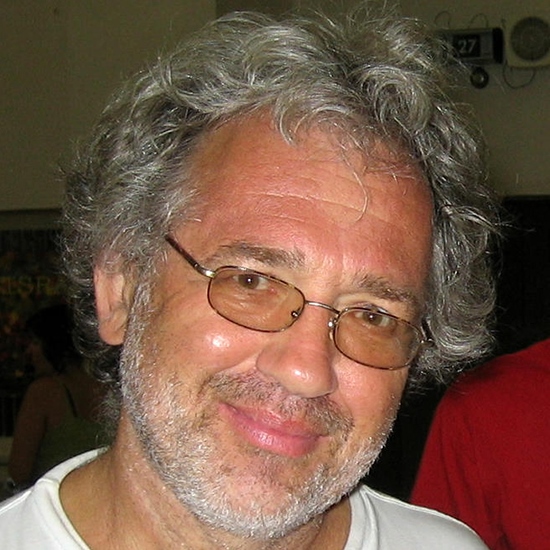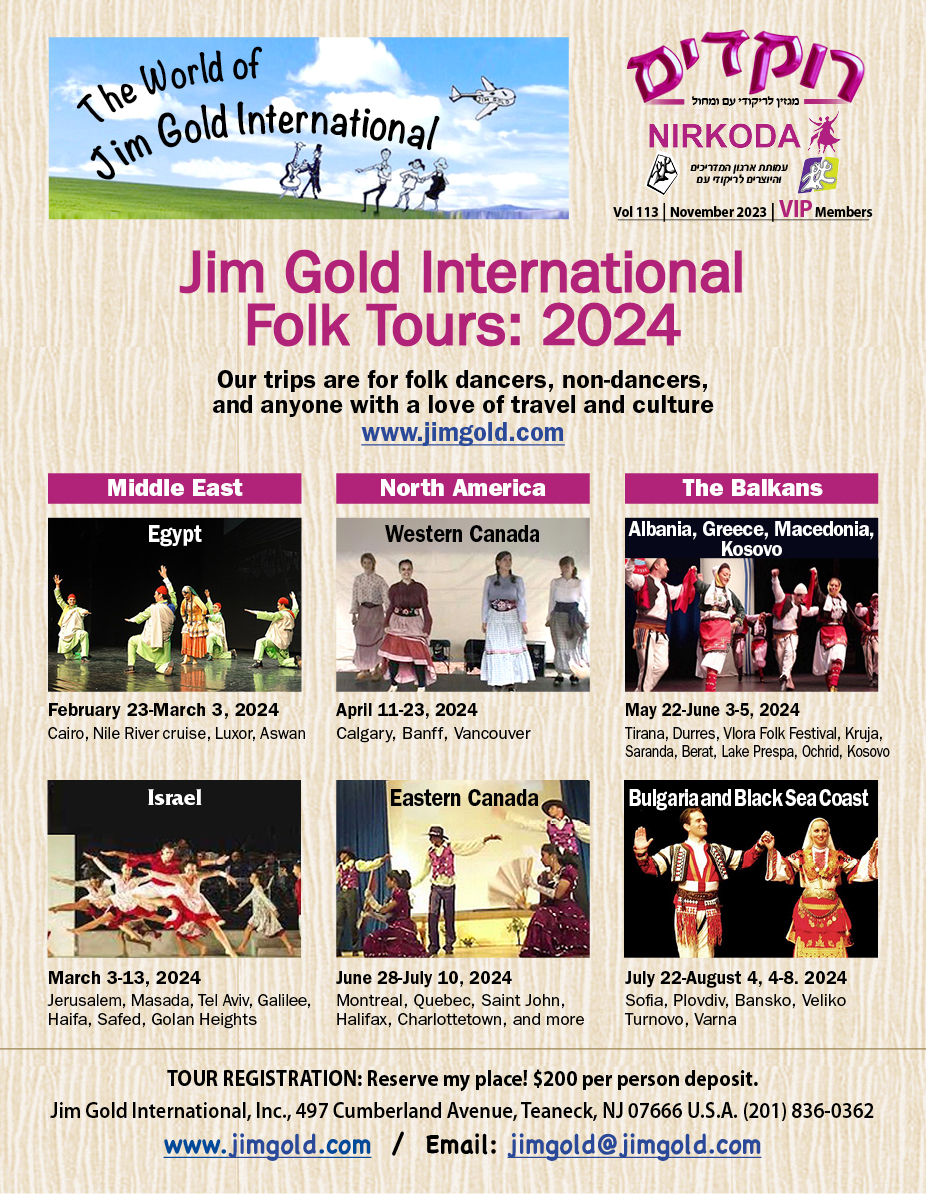- Home
- Rokdim Nirkoda 113
- From Seclusion to International Openness
-
1,435
Would one really have suspected that there was Israeli folk dance in Taiwan? I was going to find out this and a few other Jewish characteristics during my 25-day trip to Taiwan in March 2023. The country has about 24 million inhabitants and is about a quarter larger than Israel. In the preparation phase for my trip, I established contact with Benjamin Schwall, the president of the Taiwan Jewish Community (TJC) who had emigrated approximately thirty years from the USA, with four children and married to a Taiwanese woman. He regretted that his community, with about 150 permanent members, was far too small to hold a regular folk dance class. But he would be happy to hold a trial balloon class under my leadership. And so, on a Sunday in a park south of the Keelang River, the Dajia Riverside Park Pavilion, the first “open air” course was held with dances for beginners that included, for example, “Kuma Echa” (Rivka Sturman, 1945), “Tzadik Katamar” (Yonathan Gaby, 1965) or “Shabbat Matana” (Uri Krieser, 1992). Schwall provided a battery-powered amplification system as well as drinks. The fact that on the same day, the annual community Purim party was to take place at 5 p.m. and that a performance by an Israeli dance troupe, under the direction of choreographer Sharon Eyal was already scheduled at 2.30 p.m. in the National Theatre, may have been a couple of reasons why only about twenty participants attended this morning and ultimately it was an only one-time, two-hour course.
Among those present were also some (non-Jewish) Taiwanese who – rather by chance – heard about this event via Melbourne-based Richelle Arber. Over the Corona months, Arber had organized an online Zoom dance course and had been able to recruit, among others, Chin Chin Tseng (曾金金) and Shingjiang Jessie Lue (呂幸江) as participants from Taiwan. Both of them drew my attention to a weekly international folklore dance evening where Israeli dances would also be cultivated. As it turned out, in the course of the research, there is virtually no possibility of dancing exclusively Israeli dances in Taiwan. On the other hand, there are international folklore dance courses practically everywhere in the country, especially at the country’s more than one hundred universities or institutions of higher learning, where Israeli dances are often overrepresented, at least quantitatively.
The Kuo Min Tang (KMT), the Nationalist Party of China, essentially promoted Chinese culture and Mandarin as the Chinese language. The domain of this party was limited to Taiwan since 1949 after they were defeated by the communists. The languages of the indigenous people of Taiwan were officially not allowed to be spoken, even the pure study of (ancient) Taiwanese history was forbidden. Likewise, apart from the basic ban on assembly, dancing in general, was considered “against morality”. Since martial law was in force in Taiwan for 38 years, i.e. until the late 1980s, practically any “assembly” of several people was considered to be “unlawful” and thus impossible. It was always coupled with the fear of the rulers that meetings critical of the government might occur. The only way to legally assemble at the time was to cultivate (international) folk dancing, for which a first national dance event was organized in 1981, some six years before martial law ended. In the meantime, permanent dance circles had long since developed at many universities, even at high schools, which also included Israeli folk dances within the framework of being “international”. It remains to be seen how these dances came to Taiwan, but presumably, one or the other was introduced by US-Americans who were in Taiwan for business or military reasons, usually only for a limited period of time. In any case, the name of Connecticut-born Richard Crosby “Rickey” Holden (1926-2017) should not be forgotten. In the 1950s, he taught folkloric dances worldwide and is known to have included “Mayim Mayim” (Else Dublon, 1937), among several Israeli folk dances in his repertoire. It is a melody that is still extremely popular today, not only in Taiwan but especially in Japan.
For many years, An-Hsiang (余安祥) has been inviting people to dance four times a week, including two-hourly meetings on Thursdays in the Taipei neighborhood of Dingxi. This event should serve as the prototype of a typical folkloric dance evening in Taiwan. The dance circle has about 40 members who pay TWD 1,000 (= US $ 33 or ILS 120) per trimester, i.e. for about thirteen to fourteen meetings. The hall itself, which could easily hold three times as many dancers, is provided by the municipality at highly reduced fees. A few days before each meeting, An-Hsiang publishes a “playlist” together with links to the individual dances, so that these dances can be practiced at home by the participants-to-be before the actual dance class. On the dance evening itself, the planned song titles are played in the order provided, with the addition of the announcement of each dance title. The names of the dances are actually never reproduced in the original Hebrew version, but translated directly into Chinese. This goes so far that the average dancer does not at all know the original Hebrew titles. Nevertheless, the repertoire is somehow up to date: Dances that are popular in Israel right now are also widely known in Taiwan. For example, my suggestion to teach “Kurdion” (Shmulik Gov-Ari, 2022) or “Mama Sheli” (Nurit Melamed, 2022) was unnecessary, since these dances had already long been familiar. They would have rather preferred something older and so I taught “Halleljah” (Boaz Cohen, 2016) as well as my own choreography, “Shakharuth” (2005). The fact that in both cases the music came from Canada (Leonard Cohen and Loreena McKennitt respectively) was completely unintentional and a pure coincidence.
An-Hsiang, born in 1962, already had started with circle dances in high school, but according to his own words, he specializes in Balkan dances. He is supported by Bi-Ying (詹璧瑛), born in 1967, who started dancing mainly classical Chinese dances as a child. Quite consistently, she became a member of the local folk dance club during her university studies. Her Israeli-born future husband, who had a temporary job at the same university, was surprised one day to hear Israeli songs coming from a sports hall. He went to investigate the source of the music and soon made the acquaintance of Bi-Ying. They married and lived in Israel for a couple of years. During this time, Bi-Ying specialized in Israeli folk dance. She not only completed a dance leader course in Tel Aviv and visited the Karmiel Dance Festival, among others, but also studied Hebrew, which she speaks much better than English. Her dance partner for many years has been Chen-Chung (吳振中), born in 1966, who also started doing circle dances at the university. In addition to his main job as a civil servant at the Ministry of Economy, he has been teaching not only Israeli but especially Balkan dances for many years.
Just about sixty kilometers southeast of Taipei, the capital of Taiwan, lies the city of Yilan (population 460,000). Xu Wenhong, his wife Tsui-yen, Fang-chih Chen and Jiaxing Jiang have been teaching and dancing at the local university for decades. As can be observed worldwide, younger dancers are also underrepresented here, even if Lucia, Jiaxing’s daughter, has long since followed in her parents’ dance footsteps and has already been able to build up her own fan community on the internet with Israeli folk dances such as “Shikor ve-lo mi-Yayin” (Barry Avidan, 1991) or “Katonti” (Oren Ashkenazi, 2012) via Youtube video clips.
For several decades, until the lifting of martial law, it was only possible for the inhabitants of Taiwan to find an insight into other countries and cultures through this kind of folkloric dancing. This side effect was certainly one of the criteria that Israeli folk dances are still cultivated today. In addition, there are on average, much simpler rhythms or beats of 2/4 or 4/4 compared to the 7/8 or 9/8 in many dances from the Balkans. Not only in Taiwan, certainly, the predominant and internationally well-received “schlager” music in Israeli folk dances, since around the year 2000, could be another criterion for having taken the dominant place in international folk dance circles as we can observe it today in Taiwan.









Comments
התראות